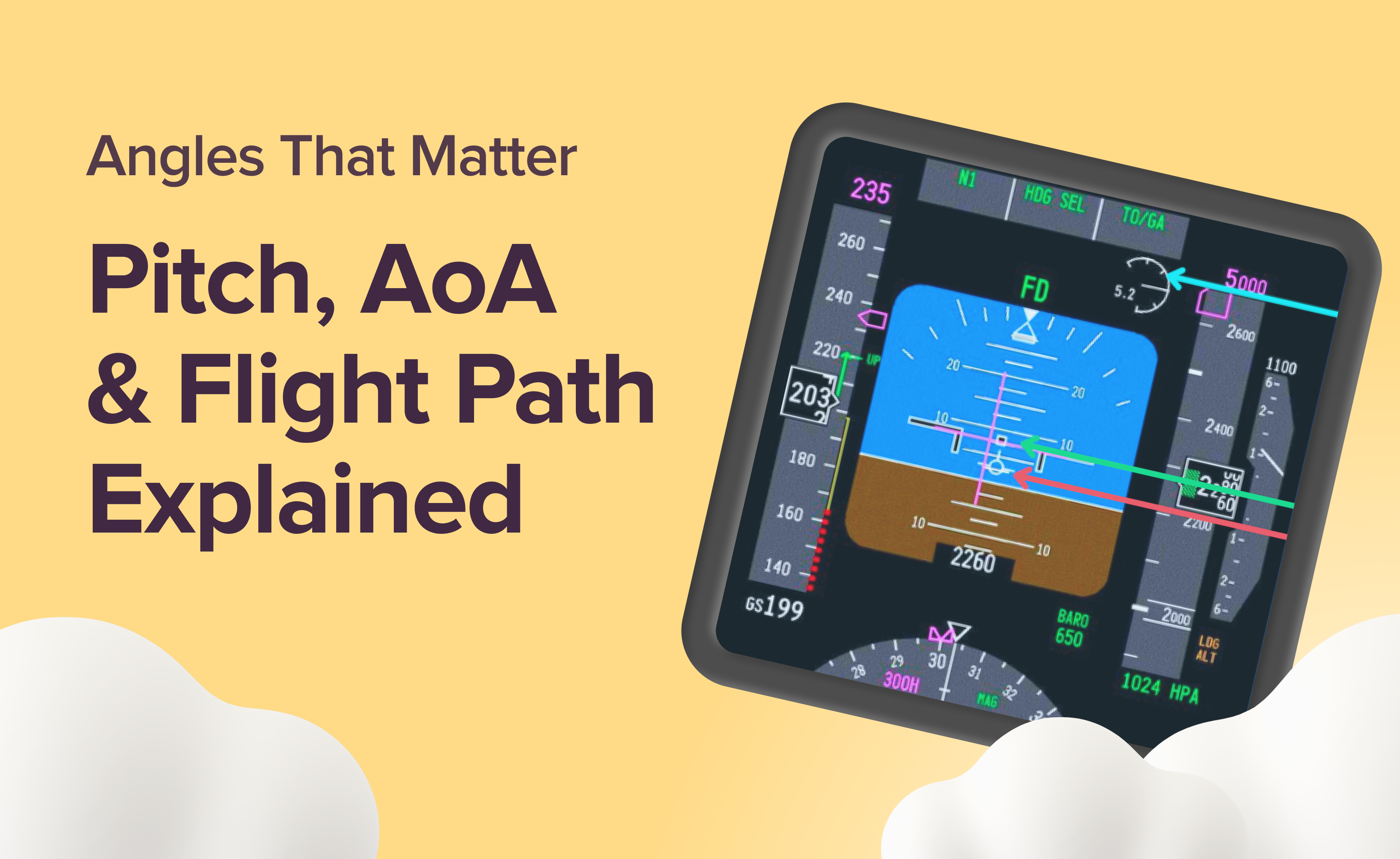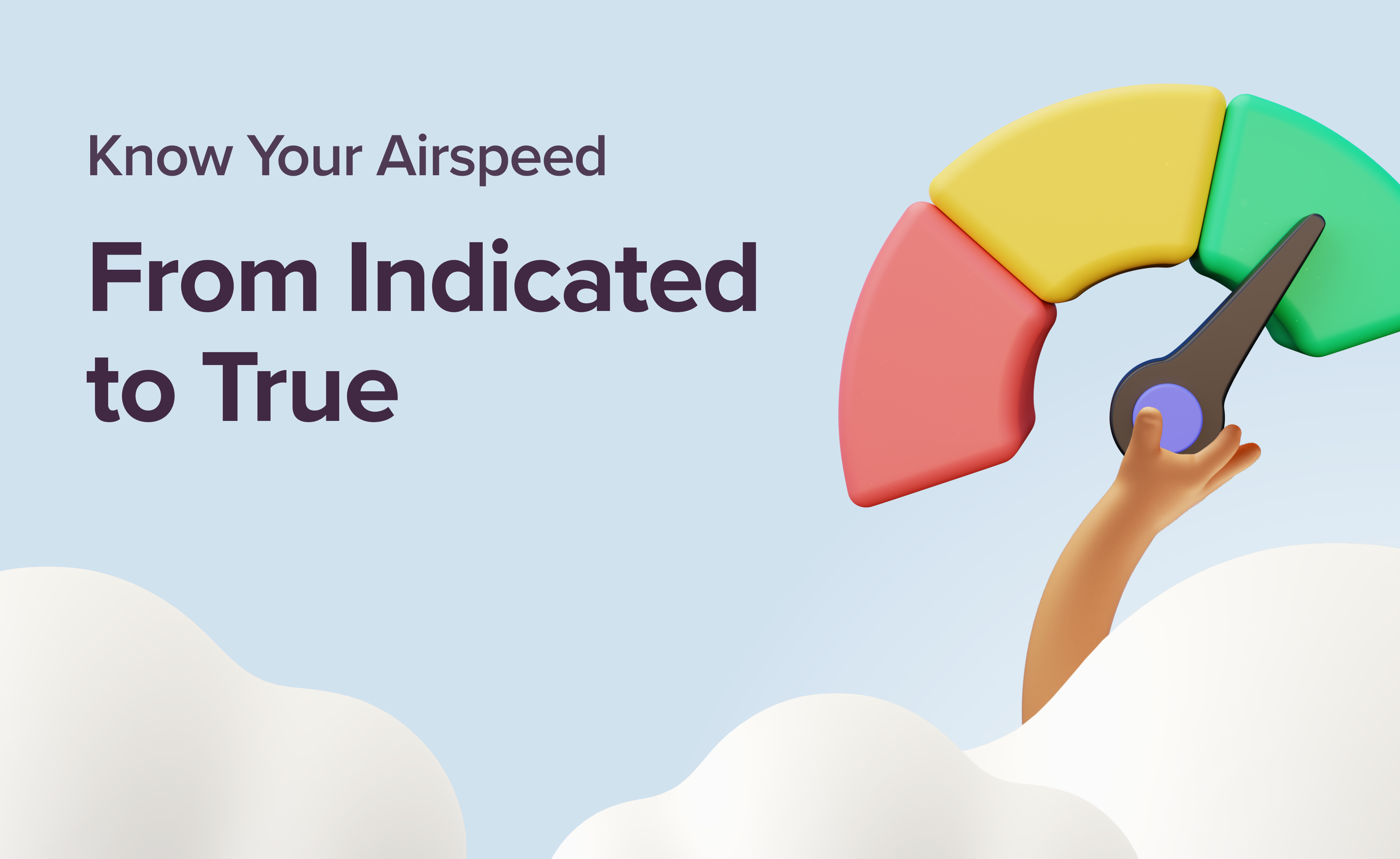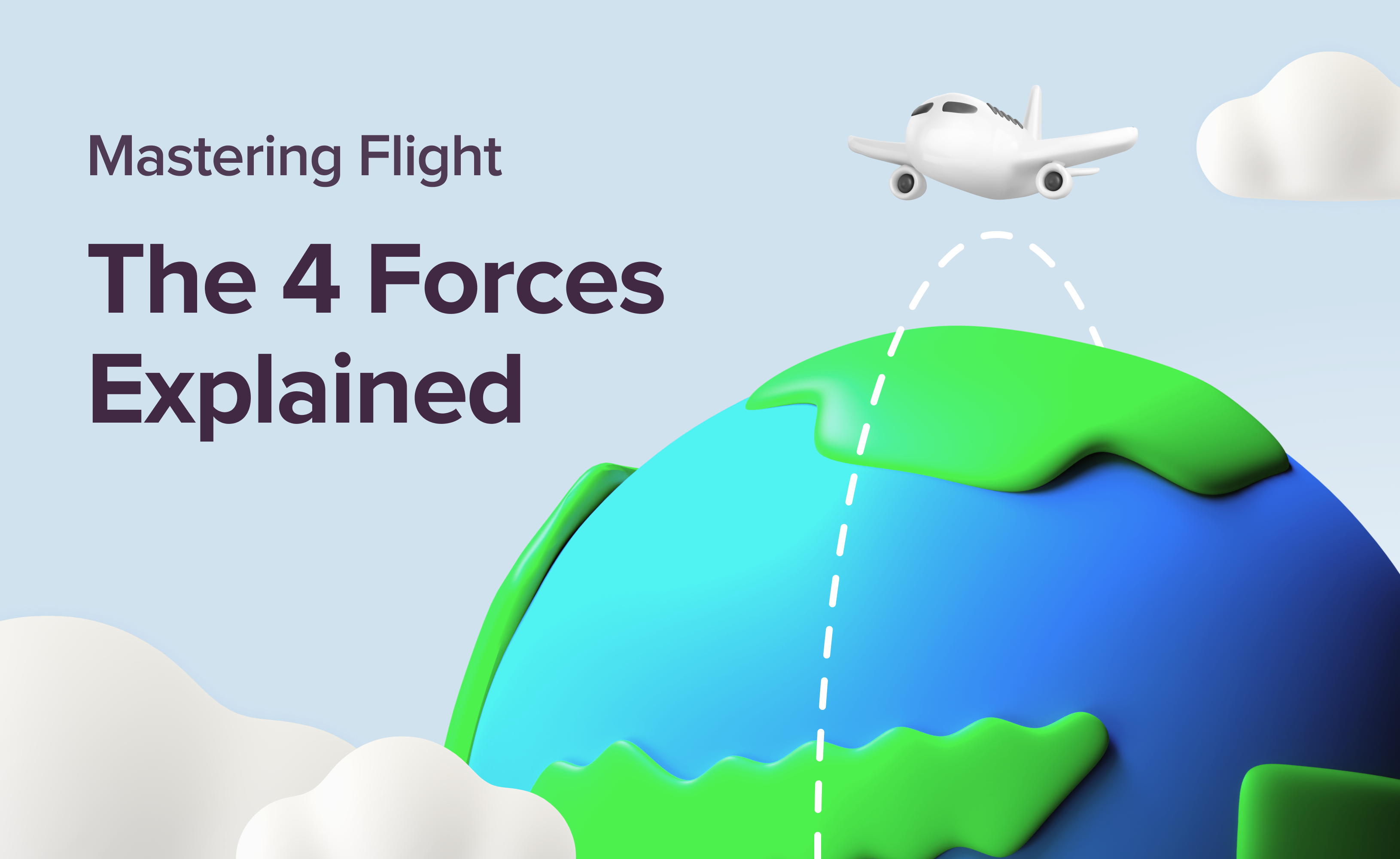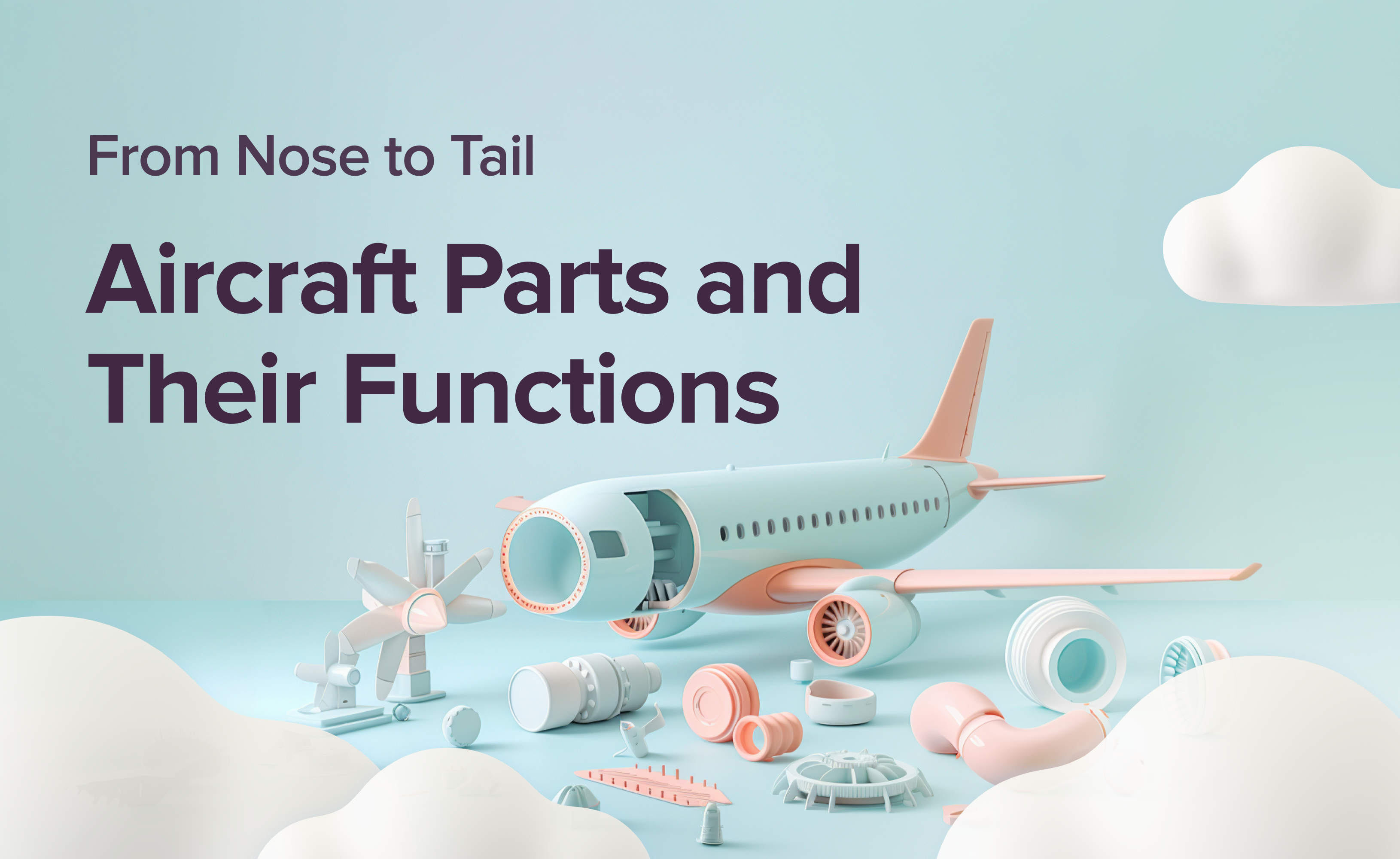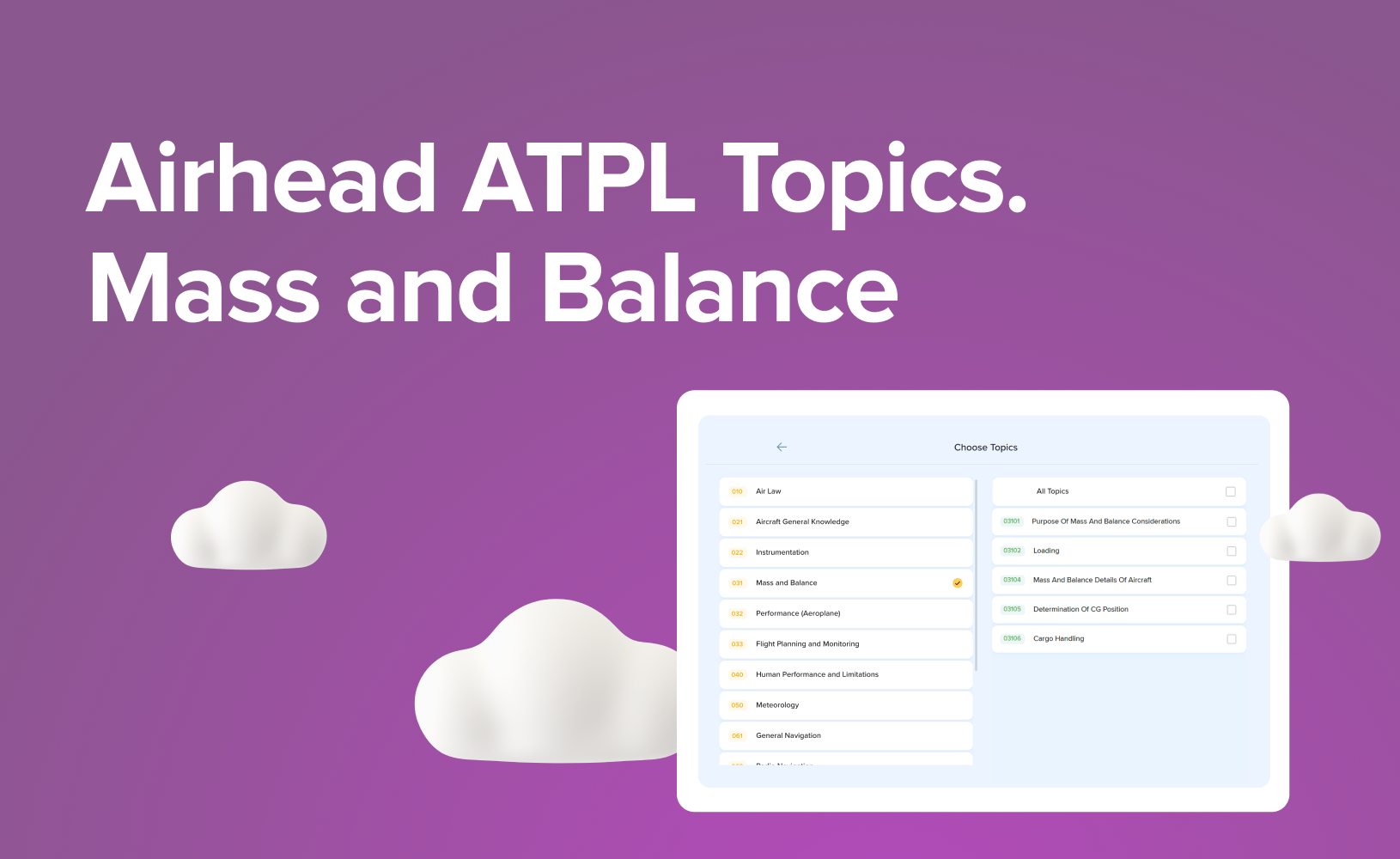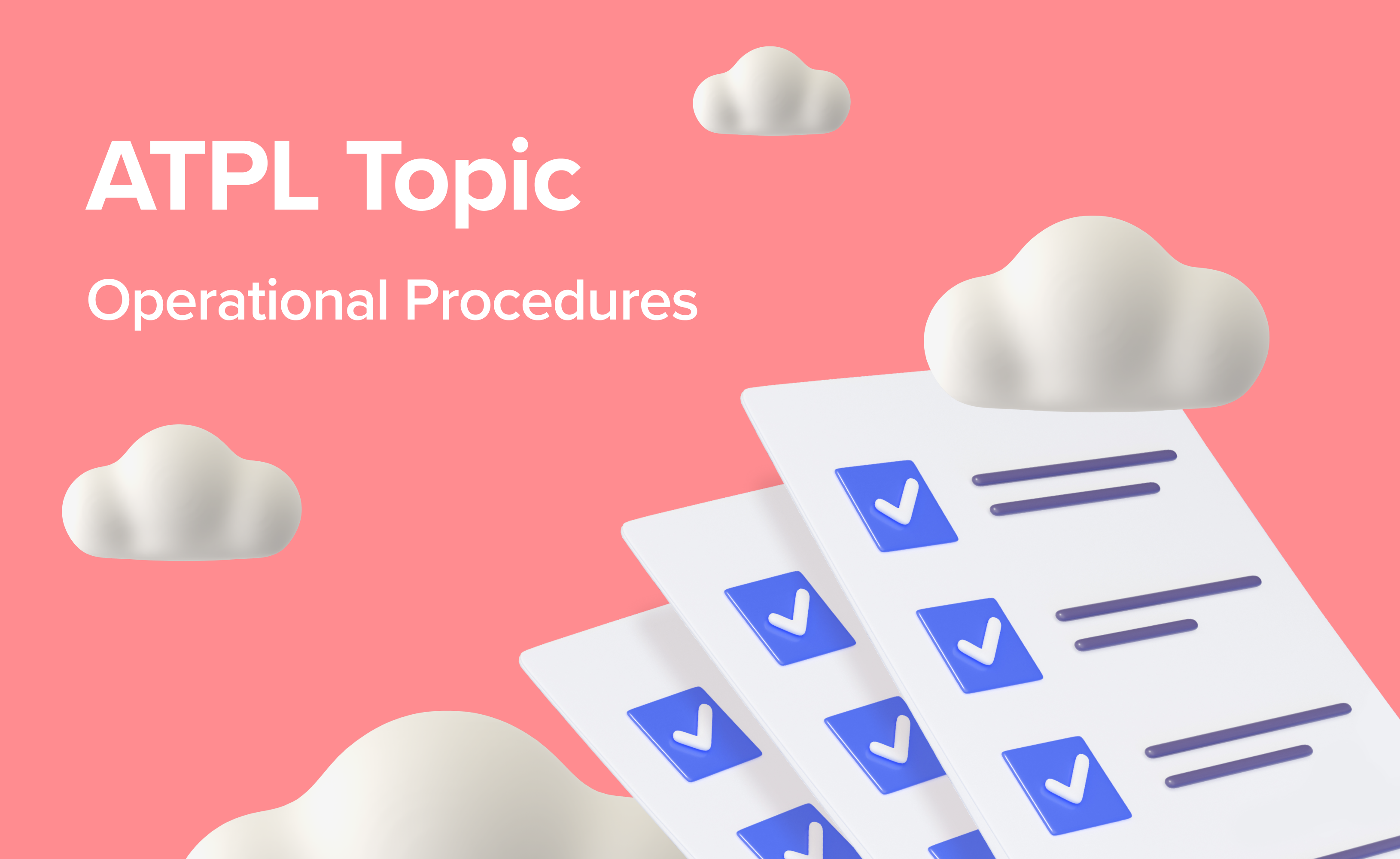ATPL Topic: Mastering Instrumentation

As an aspiring pilot, you may see Instrumentation as just one of the ATPL theory exams to master. However, for a professional pilot, it's the eyes and ears of the cockpit. Think of it as the dashboard of your aircraft, filled with gauges, dials, and digital displays that give you real-time information about your plane's performance, surroundings, and navigation.
As technology progresses, aeroplanes are evolving with increasingly sophisticated features, making it crucial to grasp the nuances of instrumentation to obtain an ATPL licence successfully.
That's why in this blog, we'll explore subtopics, a few examples of atpl questions, the key components of course material and share some tips on studying this essential topic effectively.
What Are Aircraft Instruments?
Instrumentation is among a broad range of topics related to the understanding of aircraft systems and their operation under the larger topic of aircraft general knowledge. It involves the study of aircraft's instruments and the systems used for measuring, monitoring and displaying critical flight parameters on aircraft performance data.
There are four main categories of aircraft instruments:
Flight Instruments
Engine Instruments
Navigation Instruments
Miscellaneous Position/Condition Instruments
Exam Overview
Theoretical knowledge examinations on Instrumentation subject consist of 60 questions packed into 1 hour and 30 minutes and aim to test the student's ability to interpret and understand a variety of dashboard gauges, dials, and digital displays.Its difficulty level ranges from easy to medium. Among aviation students, it is considered an easy ATPL subject compared to 13 atpl subjects. According to the statistics, 90% of examinees pass this atpl easa exam successfully.
Subject Syllabus
In the ATPL course, the Instrumentation subject syllabus comprises 15 sub-topics. Let's have a brief look at each of them.

022 01 Sensors and Instruments
Instrumentation starts with understanding the sensors and instruments that provide critical data for flight planning and performance. In this foundational segment, you'll grasp the essential instruments — such as the airspeed indicator, altimeter, attitude indicator (artificial horizon), heading indicator (compass), and vertical speed indicator.
022 02 Measurement of Air-Data Parameters
This class equips you with the knowledge to interpret and respond to your aircraft's behaviour and the surrounding conditions, all crucial for safe and efficient flying. This includes understanding how to accurately measure and interpret: airspeed and altitude, vertical speed and outside air temperature (OAT) and its impact on aircraft performance, angle of attack (AoA) and Mach number — the ratio of the aircraft's speed to the speed of sound.
022 03 Magnetism in Aeroplanes
In the context of automatic flight control systems, magnetism plays a crucial role in providing heading information for general navigation and guidance. Automatic flight control systems use magnetic heading data to control the aircraft's flight path, adjust course deviations, and execute turns or heading changes as required.
022 04 Gyroscopic Instruments
Instrumentation not only includes magnetic compasses but also gyroscopic instruments, such as the attitude indicator and heading indicator, which are less sensitive to certain errors that affect magnetic compasses. These advanced systems rely on a gyroscope's rigidity in space to provide a stable and accurate reference for the pilot, ensuring that the aircraft's orientation in the three-dimensional space is constantly monitored and correctly displayed.
022 05 Inertial Navigation
Inertial navigation systems (INS) is a technique that relies on measuring the acceleration forces and rotation rates of an aircraft to determine its position and orientation relative to a known starting point. It utilises an inertial measurement unit (IMU), which consists of sensors such as accelerometers and gyroscopes, to continuously track the aircraft's motion.
This technology extends navigation precision beyond the visual horizon by providing continuous and accurate position updates, even when external references like landmarks or GPS signals are unavailable or unreliable.
022 06 Aeroplane: Automatic Flight Control System
Automatic Flight Control Systems (AFCS) is a technology designed to assist pilots in controlling the aircraft during flight. This comprehensive study area covers the various components and functions of automated flight control systems installed in modern aircraft.
022 08 Trims, Yaw Damper, Flight-Envelope Protection
Trims are control mechanisms in an aircraft that help maintain stability and balance by adjusting control surfaces such as elevators, ailerons, and rudders to counteract aerodynamic forces.
A Yaw damper is a system designed to reduce the effects of yaw (sideways motion) caused by factors like turbulence or engine asymmetry. It automatically adjusts the rudder to keep the aircraft stable in flight.
Flight-envelope protection is a safety feature in modern aircraft that prevents pilots from inadvertently exceeding the safe limits of the aircraft's performance envelope, such as maximum speed, altitude, or angle of attack. It helps enhance safety by providing warnings or automatically limiting control inputs when the aircraft approaches or exceeds these limits.
022 09 Autothrust — Automatic Thrust Control System
This system is particularly useful during different phases of flight, such as takeoff, climb, cruise, descent, and landing, where precise control of airspeed is crucial for safety and efficiency. It is a component of the aircraft's automated flight control system that manages engine thrust automatically. It works in conjunction with the autopilot to control the aircraft's speed, either maintaining a set airspeed or adjusting it according to the selected flight profile.
022 10 Communication System
In aviation, the Communication System encompasses various technologies and protocols that ensure seamless communication between the cockpit and ground control. These include the use of Very High Frequency (VHF) and High Frequency (HF) radios for voice communication.
Additionally, modern aircraft are equipped with advanced systems such as the Aircraft Communications Addressing and Reporting System (ACARS), which enables digital communication for sending and receiving messages between aircraft and ground stations.
Furthermore, the Controller-Pilot Data Link Communications (CPDLC) system allows for the exchange of data messages between pilots and air traffic controllers via data link, reducing voice communication congestion.
022 11 Flight Management System and Flight Management and Guidance Systems
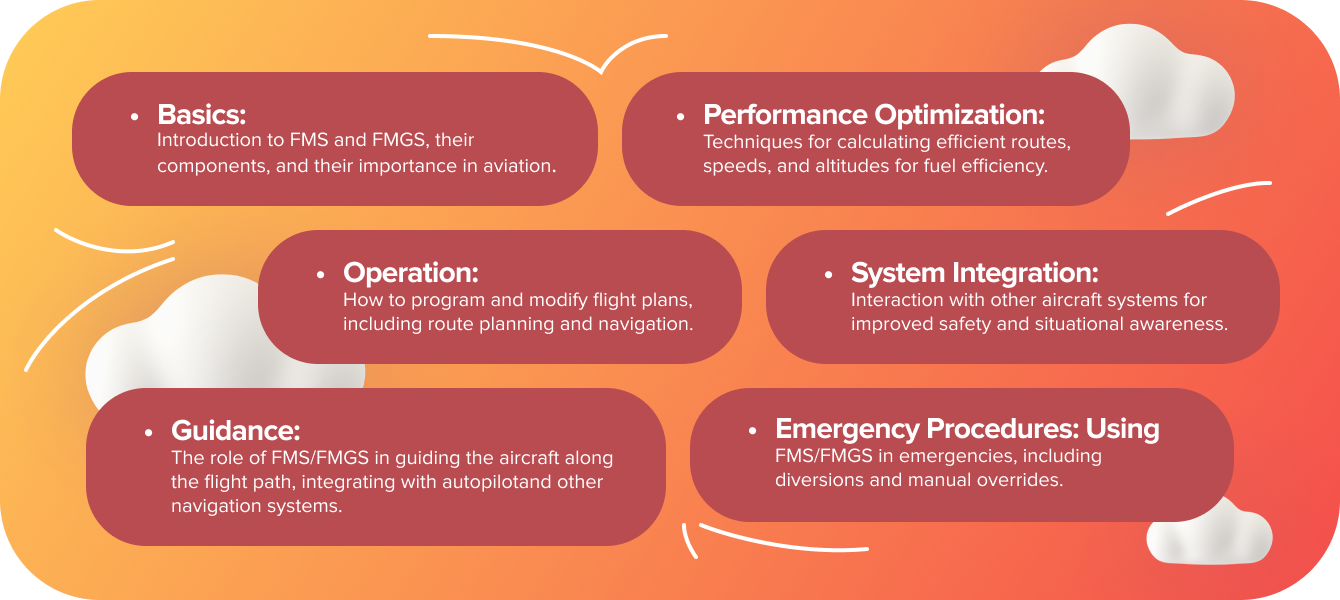
In the subtopic of Flight Management Systems (FMS) and Flight Management and Guidance Systems (FMGS), students learn about the integral avionics systems that optimize aircraft navigation and performance. The curriculum covers:
Basics: Introduction to FMS and FMGS, their components, and their importance in aviation.
Operation: How to program and modify flight plans, including route planning and navigation.
Guidance: The role of FMS/FMGS in guiding the aircraft along the flight path, integrating with autopilot and other navigation systems.
Performance Optimisation: Techniques for calculating efficient routes, speeds, and altitudes for fuel efficiency.
System Integration: Interaction with other aircraft systems for improved safety and situational awareness.
Emergency Procedures: Using FMS/FMGS in emergencies, including diversions and manual overrides.
022 12 Alerting Systems, Proximity Systems
Within this section, student pilots focus on the range of cautionary and alarm systems while operating an aircraft. This includes understanding the function and operation of systems such as Traffic Collision Avoidance Systems (TCAS), Terrain Awareness and Warning Systems (TAWS), and Ground Proximity Warning Systems (GPWS).
022 13 Integrated Instruments — Electronic Displays
The study of Integrated Instruments — Electronic Displays equips students with the knowledge and skills needed to effectively interpret and utilise modern cockpit visualisation technologies for safe and efficient flight operations.You'll learn about EFISs, glass cockpits, primary flight displays (PFDs), multi-function displays (MFDs), and head-up displays (HUDs) under this subtopic. This will give you insight into how these displays deliver critical flight information to pilots intuitively and comprehensively.
022 14 Maintenance, Monitoring, and Recovery Systems
Instrumentation in aviation is not only about providing real-time data, but also about ensuring that this information is reliable and accurate. To this end, maintenance and real-time monitoring systems are integral to the aircraft's instrumentation.They involve routine checks and diagnostic protocols that help detect anomalies or potential failures before they pose a risk to flight safety. Recovery systems, on the other hand, are designed to restore functionality or provide alternative solutions in the event of an instrumentation failure, thus allowing pilots to retain control and make informed decisions under all circumstances. These systems work in tandem to create a robust safety net that underpins the trust pilots place in their aircraft's instrumentation suite.
022 15 Digital Circuits and Computers
Digital circuits and computers serve as the brainpower behind modern flights. These technological marvels are responsible for tasks such as flight management, navigation, autopilot control, engine and system monitoring, weather radar processing, and communication systems management.They enable the automation of numerous operational procedures and functions, enhancing precision, reliability, and situational awareness for pilots.
Tips for Mastering Instrumentation

To master the new subject effectively, consider the following productive recommendations:
Understand the basics: Start by building a strong foundation of knowledge on aircraft instrumentation, including the various instruments, sensors, and systems used in aviation.
Utilise study materials: Make use of comprehensive study materials on atpl subjects such as textbooks, manuals, and online resources specifically tailored to the Instrumentation subject.
Practice regularly: Use bank questions, and mock exams to test your knowledge and identify areas for improvement.
Visualise concepts: Use diagrams, charts, and interactive simulations to visualise complex instrumentation systems and understand how they work in real-world scenarios.
Review regularly: Schedule regular review sessions to revisit previously covered material and ensure that you retain information effectively over time.
By following these study tips and adopting a proactive approach to your studies, you can effectively master the Instrumentation ATPL subject.







